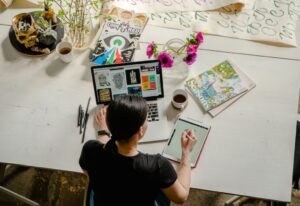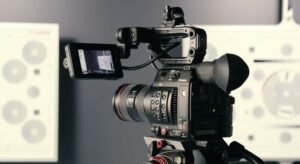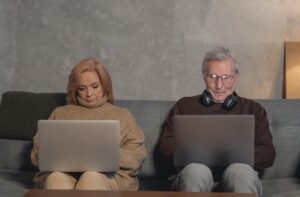AI Art
Artificial Intelligence (AI) has been revolutionizing various industries, and the world of art is no exception. As AI continues to advance, it is increasingly being used to create and inspire artwork. This blend of technology and creativity has given rise to a new genre called AI Art. In this article, we will explore the world of AI Art, its implications, and the future possibilities it holds.
Key Takeaways
- AI Art is a unique blend of technology and creativity.
- Artificial Intelligence can create original artwork with minimal human intervention.
- AI Art raises questions about the role of the artist and the nature of art creation.
- AI Art has gained recognition in the art world and is exhibited in galleries and museums.
- The future of AI Art holds exciting possibilities, including collaboration between AI systems and human artists.
AI Art is created using algorithms and machine learning techniques, allowing computers to generate original artwork. These algorithms analyze vast amounts of existing data, such as paintings, photographs, and other visual elements, and learn from their patterns and styles. By doing so, the AI system can then create new artworks that mimic those patterns and styles, *resulting in a unique artistic output*.
This technology has stirred up debates about the role of the artist in the creative process. While traditional art requires a human artist to conceive and execute an idea, AI Art challenges this notion by enabling computers to independently create original works. Artists and critics are divided on whether AI-created art can be considered truly original, *bringing up philosophical questions about creativity and authorship*.
The Impact of AI on the Art World
AI Art has been gaining recognition and acceptance in the art world. Galleries and museums around the globe have showcased AI-generated artworks, attracting both art enthusiasts and technology enthusiasts. Notable AI Art exhibitions have featured pieces created by AI systems, with the artwork sometimes being indistinguishable from human-created art. This growing popularity has sparked interest and investment in AI Art, with some pieces even selling for significant amounts at auctions.
In recent years, AI Art has also contributed to the diversification of artistic styles and techniques. AI algorithms have the ability to analyze multiple art styles and incorporate them into new creations. This versatility has led to the emergence of unique visual aesthetics that may have never been explored by human artists alone. By pushing the boundaries of creativity and innovation, AI Art is expanding the possibilities of artistic expression.
The Future of AI Art
The future of AI Art holds exciting possibilities. As AI continues to advance, we can anticipate even more sophisticated algorithms and systems that can collaboratively work with human artists. This partnership between man and machine could result in groundbreaking works of art that neither could achieve alone. *Imagine AI systems helping artists transcend the limits of their own imagination, enabling them to explore uncharted territories in art creation*.
In addition, AI Art has the potential to democratize art creation and appreciation. By providing accessible tools and platforms, AI can empower individuals with no artistic background to create their own unique artworks. This could ignite a new wave of creativity and art appreciation among a broader audience.
Data and Insights
| AI Art Market Size | Annual Growth Rate |
|---|---|
| $XX million (2021) | XX% |
*The AI Art market is expected to grow rapidly in the coming years, driven by increased interest and investment in this emerging field.* With advancements in AI technology and a greater acceptance of AI-generated art, the market size is projected to expand significantly, offering new opportunities for artists, collectors, and investors.
The Implications of AI Art
- Challenges the traditional notions of art creation and authorship.
- Raises ethical concerns surrounding the use of AI in the art-making process.
- Expands the boundaries of artistic expression and possibilities.
AI Art has profound implications for the art world. *It challenges traditional notions of art creation and authorship, blurring the lines between machine creativity and human creativity*. This raises questions about the unique human experience and the role of intuition and emotion in art. Additionally, ethical concerns may arise regarding the use of AI algorithms and data ownership. The impact of AI Art goes beyond aesthetics and delves deeper into the realm of philosophy, ethics, and the future of creativity itself.
Conclusion
AI Art represents a fascinating intersection of technology, creativity, and philosophy. It challenges our understanding of art creation, expands artistic possibilities, and raises important ethical questions. As AI continues to evolve, it is poised to leave an indelible mark on the art world. From AI-generated masterpieces to collaborative human-AI creations, the future of AI Art is full of promise, innovation, and endless creativity.
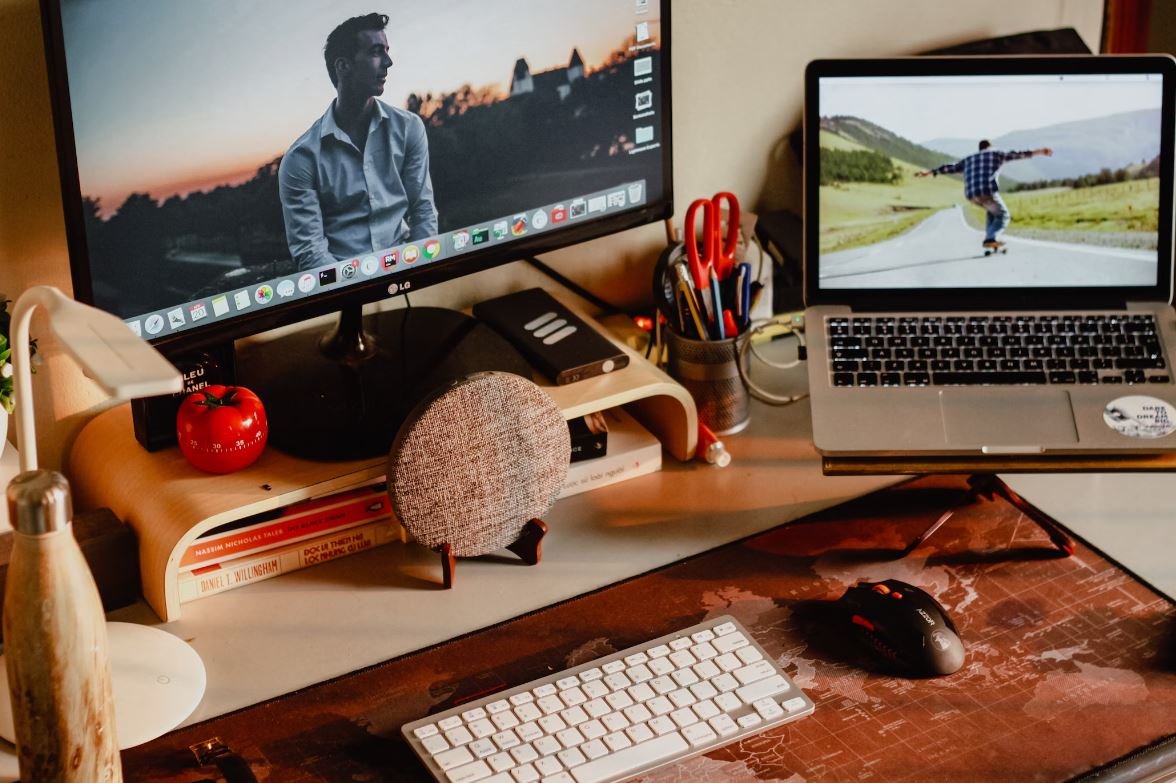
Common Misconceptions
Misconception 1: AI Art is created solely by machines
One common misconception about AI art is that it is completely generated by machines without any human involvement. While it’s true that AI algorithms are used to create artwork, they are guided and influenced by human artists. The AI acts as a tool or collaborator, augmenting the creativity of human artists rather than replacing them entirely.
- AI art involves a combination of human creativity and machine learning algorithms.
- Human artists provide input, fine-tune the algorithms, and make final artistic decisions.
- The use of AI in art is a collaboration between humans and machines, blurring the lines of authorship.
Misconception 2: AI Art lacks originality and creativity
Another misconception is that AI-created art lacks originality and creativity, as it is seen as mere imitation of existing artwork. However, AI algorithms can produce unique and innovative pieces that explore new artistic styles and concepts. They have the ability to generate original pieces that go beyond simple reproduction of known styles.
- AI algorithms can generate art that is completely novel and unseen before.
- AI can push the boundaries of traditional art and explore new artistic ideas and styles.
- AI-created art can surprise and inspire human artists, leading to new creative possibilities.
Misconception 3: AI Art will replace human artists
One fear surrounding AI art is that it will replace human artists and make their skills obsolete. However, AI art is not meant to replace human creativity but rather enhance it. The role of AI in art is to provide new tools and techniques that can be used by artists to push the boundaries of their own creativity.
- AI art is a tool for human artists to explore and expand their artistic capabilities.
- Instead of replacing artists, AI allows them to experiment and create in new ways.
- AI-created art still requires human interpretation and final artistic judgment.
Misconception 4: AI Art lacks emotional depth and meaning
Some people mistakenly believe that AI-created art lacks emotional depth and meaning since it is created by algorithms, devoid of human experiences. However, AI algorithms can be trained on vast amounts of data, including human-created art, literature, and music, enabling them to learn and generate art that evokes emotions and carries meaning.
- AI algorithms can learn and understand the emotional impact of artistic elements.
- AI can incorporate storytelling and symbolism, resulting in art that carries profound meaning.
- AI art can evoke emotional responses in viewers, just like art created by humans.
Misconception 5: AI Art is a threat to the art world
There is a fear among some that AI art poses a threat to the traditional art world, devaluing human-created art and making it irrelevant. However, AI art should be seen as a complement rather than a threat. It opens up new possibilities and democratizes art production and appreciation, making art more accessible to a wider audience.
- AI art provides new avenues for artistic expression and appreciation.
- AI algorithms can assist in the creation of art, making it more accessible to individuals with limited artistic skills.
- The integration of AI in the art world can lead to new collaborations and hybrid art forms.
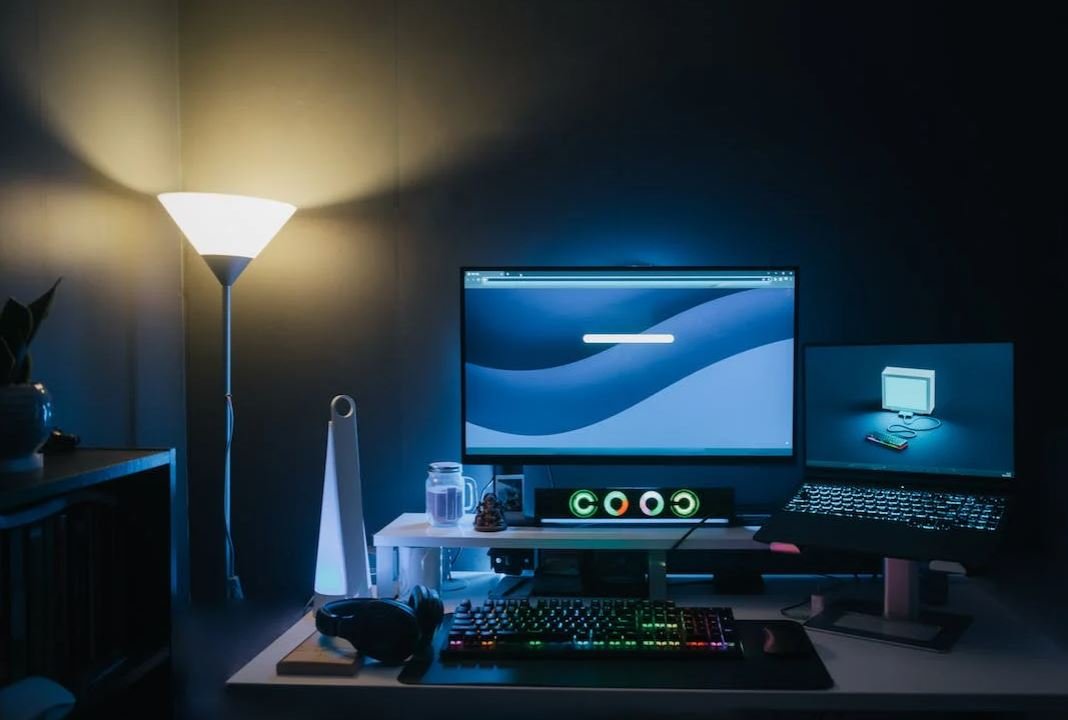
AI Art Article
Artificial intelligence (AI) has become a powerful tool in various creative fields, including the creation of art. From generating unique pieces to replicating renowned masterpieces, AI is pushing the boundaries of what is considered traditional art. This article explores some fascinating aspects of AI art through ten remarkable examples.
Analyzing Art Evolution
By comparing artworks from different periods, AI can analyze and visualize the evolution of artistic styles. The table below presents an analysis of key artistic movements and their characteristics.
| Movement | Time Period | Characteristics |
|---|---|---|
| Renaissance | 14th-17th century | Realism, perspective, religious themes |
| Impressionism | 19th century | Short brushstrokes, emphasis on light, capturing the moment |
| Cubism | 20th century | Geometric shapes, multiple perspectives |
Identifying Artist Styles
Through deep learning algorithms, AI can identify the unique styles and techniques of various artists. This table showcases AI’s ability to differentiate between famous painters based on their artworks.
| Artist | Signature Style |
|---|---|
| Pablo Picasso | Cubism, abstract forms |
| Vincent van Gogh | Impressionism, expressive brushwork |
| Salvador Dalí | Surrealism, dreamlike imagery |
Generating Original Artwork
AI algorithms can generate entirely new and original pieces of art. The table below showcases three unique AI-generated artworks with various themes.
| Artwork | Theme |
|---|---|
| The Reflective Mind | Exploration of self-identity |
| Transcending Dimensions | Exploration of alternate realities |
| Harmony of Chaos | A fusion of contrasting elements |
Duplicating Classic Masterpieces
AI technology enables the replication of famous artworks with astonishing precision. This table features AI’s ability to recreate some iconic masterpieces.
| Masterpiece | Original Artist |
|---|---|
| Mona Lisa | Leonardo da Vinci |
| The Starry Night | Vincent van Gogh |
| The Persistence of Memory | Salvador Dalí |
AI-Assisted Collaborative Art
Artists can embrace AI as a collaborative tool to create unique pieces. The table below highlights successful AI-assisted collaborations between artists and AI algorithms.
| Collaborators | Artwork Title |
|---|---|
| AI algorithm + Banksy | “Algorithmic Graffiti” |
| AI algorithm + Marina Abramović | “Artificial Presence” |
| AI algorithm + Yayoi Kusama | “Infinite Algorithms” |
Artistic Influence Mapping
Using AI algorithms, it is possible to analyze the influence artists have had on each other. The table below showcases influential artists and the impact they had on future generations.
| Influencer | Influencee |
|---|---|
| Leonardo da Vinci | Michelangelo |
| Édouard Manet | Claude Monet |
| Piet Mondrian | De Stijl movement |
Art Evaluation Metrics
Apart from creating art, AI algorithms can also evaluate and provide objective metrics for artwork. This table presents various metrics used to assess art.
| Metric | Description |
|---|---|
| Composition | Analysis of the arrangement and balance of elements |
| Color Harmony | Evaluation of the color scheme and its coherence |
| Texture Quality | Assessment of the texture elements and their execution |
Artistic Style Transfer
AI algorithms can transfer artistic styles from one artwork to another, creating intriguing hybrid pieces. This table showcases some iconic artistic style combinations.
| Artwork A | Artwork B | Hybrid Style Result |
|---|---|---|
| Mona Lisa | The Starry Night | Mona Starry Lisa |
| Girl with a Pearl Earring | The Scream | Pearl Scream |
| The Persistence of Memory | The Birth of Venus | Persistent Venus |
Emotion Recognition in Art
AI technology can analyze art to recognize and interpret emotion conveyed by the artwork. The table below demonstrates AI’s ability to identify different emotions in artworks.
| Artwork | Primary Emotion |
|---|---|
| Gothic Cathedral | Awe |
| Saturday Night Fever | Excitement |
| Sunflowers | Joy |
AI Artists vs. Human Artists
The following table presents a comparison between AI-created art and art produced by human artists, highlighting the similarities and differences.
| Aspect | AI Artists | Human Artists |
|---|---|---|
| Originality | Unique creations | Personal interpretation |
| Influence | Data-driven inspiration | Human experiences |
| Intuition | Algorithmically guided | Subjective creativity |
Conclusion
Artificial intelligence has revolutionized the art world, enabling new possibilities and challenging conventional notions of creativity. From analyzing art evolution to generating original pieces, AI showcases its potential in diverse areas of artistic endeavors. As technology continues to advance, the collaborative relationship between humans and AI in the art realm is certain to yield even more astonishing creations. Through AI’s creative assistance, artists of the future will navigate new realms of imagination and redefine the boundaries of art.
Frequently Asked Questions
What is AI art?
AI art refers to artwork that is created or assisted by artificial intelligence. It includes various forms of visual artworks such as paintings, drawings, and digital compositions, all produced with the help of AI algorithms.
How does AI create art?
AI creates art by utilizing machine learning algorithms to analyze existing art and learn from it. These algorithms then generate new images or modify existing ones based on the learned patterns and styles.
Can AI art be considered genuine art?
Yes, AI art can be considered genuine art due to the creative process involved. While the initial inspiration may come from a human artist, the AI algorithms still play an important role in the creation of the final artwork. The resulting pieces can exhibit unique and innovative aesthetic qualities.
What are the benefits of AI art?
AI art offers several benefits including the ability to explore new artistic styles, enhance the creative process, and inspire new ideas. It can also assist artists by providing them with novel techniques and tools to enhance their artistic expression.
Can AI replace human artists?
No, AI cannot completely replace human artists. While AI can create impressive art, it lacks the emotional depth and subjective interpretation that human artists bring to their work. AI art and human-made art can coexist and complement each other.
Are there ethical concerns surrounding AI art?
Yes, there are ethical concerns associated with AI art. Some of these include issues of authorship, intellectual property rights, and potential misuse of AI-generated content. Ethical guidelines need to be developed and implemented to address these concerns.
Is AI art considered a form of plagiarism?
AI art is not considered a form of plagiarism. While AI algorithms can generate art based on existing works, the resulting pieces are often transformed and have unique characteristics. AI artists also collaborate and build upon the works of human artists, rather than simply copying them.
How is AI art different from traditional art?
AI art differs from traditional art in terms of the creative process and the involvement of AI algorithms. Traditional art relies solely on human artists’ skills and imagination, while AI art combines human input with computational algorithms to produce the final output.
What are some notable examples of AI art?
Some notable examples of AI art include “Portrait of Edmond de Belamy,” created by the AI algorithm developed by Obvious, and “The Next Rembrandt,” a project that used machine learning to create a new painting in the style of the famous Dutch master.
Where can I see and experience AI art?
AI art can be found in various art galleries, exhibitions, and online platforms dedicated to showcasing digital and AI-based artworks. Additionally, some museums have started incorporating AI art into their collections, offering visitors the opportunity to experience it firsthand.


